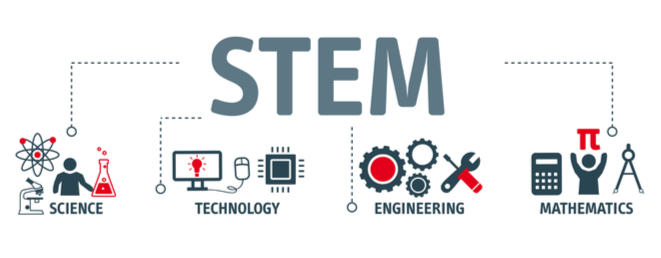Schools with and without STEM: Why it matters

There are endless opportunities in STEM (Science, Technology, Engineering, and Mathematics) industries all over the world. The demand for qualified people in the United States to fulfill this need is growing at a rate we haven't been able to keep pace with.
Finding qualified workers to fill in-demand STEM positions has caused companies to remain dormant in their efforts to move forward with the times. Being able to hire workers who are qualified to handle STEM duties is a serious issue. It's estimated that 3.5 million jobs will need to be filled by 2025. With so many STEM positions open and available and not enough workers to fill them, STEM education has become a growing priority.
Demand is lacking not because there isn’t interest in STEM, but because people just aren’t skilled to fill these openings. When you take that a step farther, people aren’t suited with the skills required of STEM jobs because STEM education isn’t readily available for all. It isn't something being integrated or presented early enough (or often enough) in our education systems.
A few facts to consider:
STEM jobs are projected to grow 8.8%
Between 2017 and 2029, the number of STEM jobs will grow 8 percent, a higher rate than non-STEM jobs—with positions in computing, engineering, and advanced manufacturing leading the way. (Via the US Bureau of Labor Statistics)
Specifically, software development employment is projected to grow 22%
Regarding the job outlook from 2019-2029, employment in software development is projected for 22% growth.
(Via the US Bureau of Labor Statistics)
Employment in STEM occupations has grown 79% since 1990
Overall, since 1990, employment in STEM occupations has grown 79%—increasing from 9.7 million to 17.3 million.
(Via a 2018 article from Pew Research Center)
The average median hourly wage for STEM jobs is $38.85
Compared to the median earnings for all other types of jobs in the US - $19.30 - STEM-related jobs pay exceptionally well.
(Via the Education Commission of the States)
The median annual wage of STEM occupations in 2020 was $89,780
This is well over double of that of non-STEM occupations, where the median annual wage came in at $40,020.
(Via the Bureau of Labor Statistics)
The US placed 30th of 64 countries in math, and 11th in science
This is according to the Programme for International Student Assessment (PISA)—which is regarded as one of the biggest cross-national tests of its kind. (Via US World News Report)
Only 20% of US high school graduates are prepared for college-level coursework in STEM majors
According to a White House report, 20% of high school grads are ready for the rigors of STEM majors. In fact, over the past 15 years, this report also found that the US has only produced 10% of the world's science and engineering grads.
(Via American Affairs).
Women make up only about 18% of computer science undergrads
The Bureau of Labor Statistics projects that by 2026, computer science research jobs will grow 19%. However, only 18% of computer science bachelor's degrees in the US are earned by women (Via computerscience.org)
Fewer than half of the schools in the US offer computer science classes
That's right—according to a 2020 study sponsored by Code.org, fewer than half of US schools offer computer science curriculum. That begs the question... are kids going to be ready to meet the evolving, growing and changing landscape of STEM professions?
(Via ESchool News)
The Department of Education recently invested $540 million in STEM education
The White House "Charting a Course for Success Report" identified a need to bolster support for STEM education at both the K-12 and collegiate level. These funds include efforts to recruit and train quality STEM teachers, increase diverse representation, and provide curriculum and materials for schools. (Via The Department of Education).
We need STEM - In every K-12 school - And we need it now!
The facts tell us all we really need to know--We need to do better for the next generation by offering a pathway to a fruitful and productive future for all K-12 students. It's clear, when STEM curriculums are integrated early and consistently, and are made part of the core curriculum, students continue those interests and in return we are providing skilled workers for in-demand STEM careers. It is our job as educators to prepare the next generation. So our kids have a say in the world around them and know how to create the change their world needs. When we demand better for our youth and make STEM the "common core" of our educational system, we will have the ability to compete in the ever changing technology of today and tomorrow.
To learn how you can integrate STEM into your class, school or district visit stemfuse.com
or request a demo at stemfuse.com/request-demo
